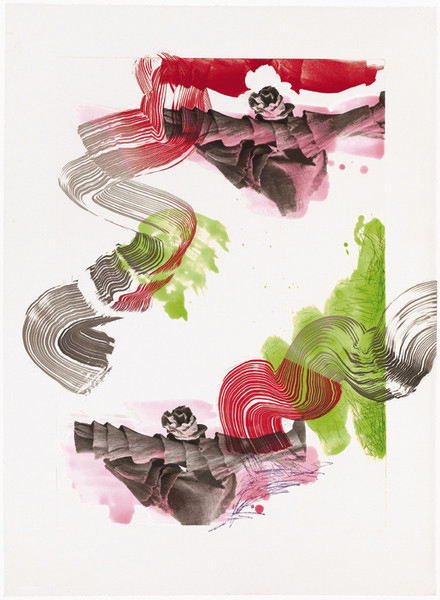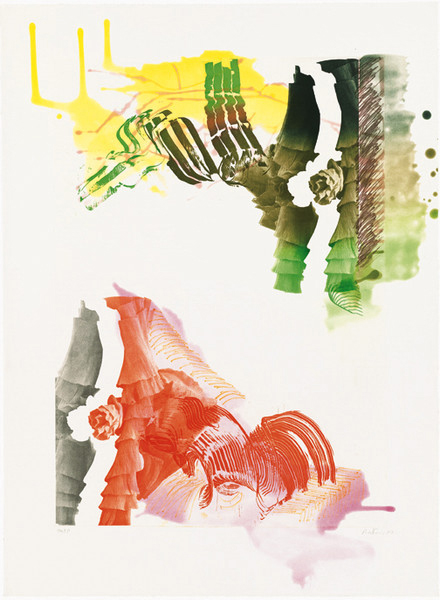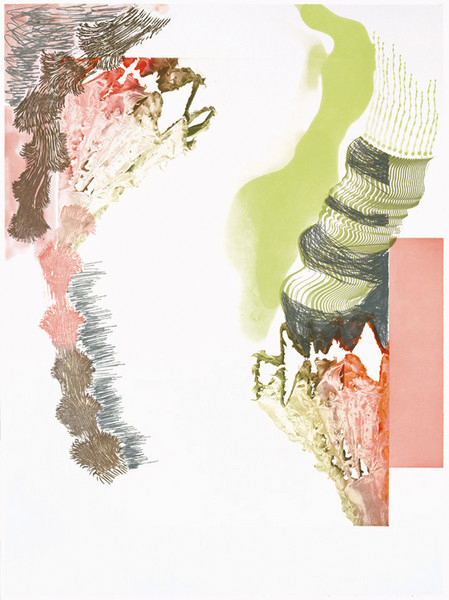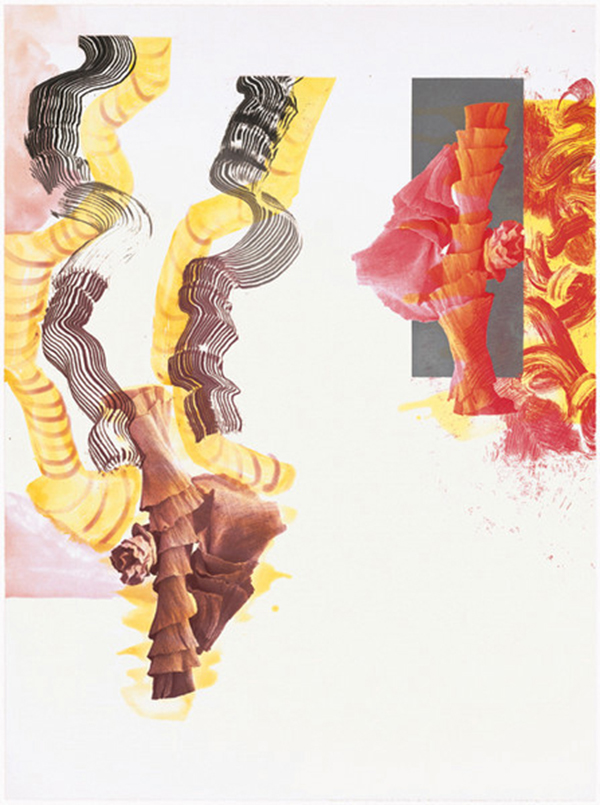In the catalog essay for her 2006 exhibition at London’s Bernard Jacobsen Gallery, Dave Hickey writes of Pia Fries: “Of all the continental exemplars of rowdy, American abstraction, Fries’ I think are the most knowing and cosmopolitan, the most forgiving of nature and culture catastrophically jumbled, the most tolerant of the past and present fatally blurred.” Born in Switzerland in 1955, Pia Fries lives and works in Düsseldorf, Germany. She studied sculpture at the Lucerne School of Art in 1980, then moved on to the Kunstakademie Düsseldorf to study painting with Gerhard Richter until 1986. Critics have pointed out that Fries sometimes uses the squeegee to apply paint, like her mentor, but the similarity in their method ends there. Fries has said she learned from Richter not any specific theory of painting but the belief that painting was something that “you can do today.”
Pia Fries uses photographed and silkscreened elements in her work alongside and under and against fantastic piles of caked, troweled, scraped and smeared oil paint. Her extroverted passages of paint nearly always surface and submerge from areas of flat white ground. The separation of the gestures by both white spaces and the distinction of photographed marks from “real” marks keeps her work from expressionism. Each thought, however juicy, is captured and placed separately and is therefore not a painterly simulation of an ecstatic state but more possibly a dissection of one.
Hickey writes that the most important thing about Fries’ paintings is that they “deliver that quiver of cold, potential emptiness that accompanies the advent of anything new in the realm of art.” Her Loschaug suite, eight paintings on eleven panels conceived as a single piece, was completed between 2005 and 2007. In these panels she establishes a dialog with the work of Dutch naturalist Maria Sibylla Merian, whose engravings of South American insects were published in 1705. The engravings appear in the paintings as silkscreened fragments or collage elements. David Frankel, writing for Artforum in 2007, observed: “It’s not that Pia Fries is using a twenty-first century painting style to redraw eighteenth-century forms—that correlation is too precise— but that her forms and Merian’s harmonize.”
Crown Point Press published Pia Fries’ first etchings in 2007. Her first museum show was at the Museum of Art Lucerne, Switzerland in 1992. Her work was included in the Venice Biennale in 1999. A retrospective of her work, Pia Fries: Paintings 1997 – 2007, opened at Kunstmuseum Winterthur in Switzerland in April 2007 and was accompanied by a major exhibition catalog. She has had solo exhibitions at Talley Dunn Gallery, Dallas (2020); Museum Kunstpalast, Germany (2019); the Paris Museum of Modern Art (2018); Christopher Grimes Gallery, Los Angeles (2014); Bernard Jacobson Gallery, London (2006); and the Overbeck-Gesellschaft Museum, Germany (2000). Her work is held in the permanent collections of Albright-Knox Art Gallery, New York; the Detroit Institute of Art; the Los Angeles County Museum of Art; the Josef Albers Museum, Germany; Kunsthaus Zürich; and the Museum Folkwang, Germany, among others. Fries lives and works in Düsseldorf and Munich. She has been Professor of Painting at the Academy of Fine Arts, Munich, since 2014. She is represented by Mai 36 Galerie in Zurich and Miles McEnery Gallery in New York.
-Kim Bennett, Crown Point Press




